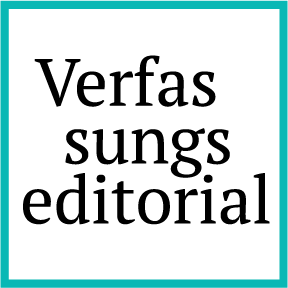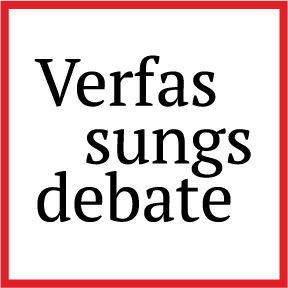A Judicial Compromise
The Dutch Supreme Court’s Judgment in the F-35 Parts Case
On 3 October 2025, the Supreme Court of the Netherlands handed down its judgment in the summary proceedings case concerning the export of parts for the F-35 jet fighter to Israel (See here for an English summary by the court). We highlight two notable elements of the Supreme Court’s judgment. First, its interpretation of international and European Union (EU) law. The Court made some questionable statements in setting out the meaning of the rules of treaty interpretation. More importantly, in its interpretation of both international and EU law, it focused on the wording of provisions and much less on the object and purpose of the relevant instruments. It also did not take into account relevant rules of international law applicable in the relations between the parties, in particular common Article 1 of the Geneva Conventions. In doing so, the Court did not follow the teleological interpretation typically taken by the European Court of Justice (ECJ). We argue that another approach to interpretation of international and EU law could have led to a (partly) different outcome of the case. Second, we reflect on the discretionary power of the State, which civil courts must respect when scrutinising acts of the State relating to foreign policy and to national or international security, such as decisions on granting or denying arms export licences. We agree that, in relation to such decisions, for which the government is accountable to Parliament, the Court’s task is confined to assessing whether the minister could reasonably have reached the decision in question.
In its judgment, the Supreme Court held that the Arms Trade Treaty (ATT) and the European Union Common Position 2008/944/CFSP on Arms Export Controls (EUCP) do not require a reassessment of an export license when relevant new information becomes available. It also held that when a State voluntarily carries out such a reassessment, it must do so using the criteria from the ATT and EUCP. The Supreme Court determined that the Minister for Foreign Trade and Development Cooperation must reassess the general licence that was issued in 2016 for the export, transit, or transfer of F-35 parts within six weeks, using the criteria in the ATT and EUCP.
The Supreme Court’s judgment was the result of an appeal by the Dutch government against the judgment of the Appeals Court of the Hague of 12 February 2024. The Appeals Court ruled that the Dutch government must immediately halt the export and transit of F-35 parts to Israel (see for analysis of that judgment here and here). The Procurator-General, whose role is to give independent advice to the Supreme Court, advised the Supreme Court to uphold the Court of Appeal’s judgment in his detailed advisory opinion. For a summary of the Supreme Court’s judgment, we refer readers to other blog posts that have already provided such summary. (See for example here).
Interpretation of EU or international law
In order to be able to rule on the argument by the claimants that the EUCP and the ATT require States to reassess an export license when new relevant information becomes available, the Supreme Court considered that it first needed to determine the criteria for interpreting the ATT and the EUCP. With regard to the ATT, it referred to the rules of treaty interpretation in Articles 31-32 of the Vienna Convention on the Law of Treaties (VCLT) (para. 4.2.7). The Court referred specifically to Article 31 (3) (b) VCLT. This Article provides that in interpreting a treaty, any subsequent practice in the application of the treaty which establishes the agreement of the parties regarding its interpretation shall be taken into account. The Supreme Court held that this entails that the prevailing interpretation in the case law and literature of the States parties to the treaty concerned is a primary means of interpretation of that treaty (para. 4.2.7). With regard to case law of the courts of States parties to the ATT, this is indeed one of the elements to be taken into account under Article 31 (3) (b). Judicial acts are considered as “subsequent practice” of States in the context of that subparagraph. The reference to “literature” by the Court is more difficult to understand, for two reasons. First, Article 31 (3) (b) refers to subsequent practice “in the application of the treaty”. Although it cannot be ruled out that literature is somehow connected to the application of the treaty, this will normally not be the case. Secondly, the fact that the subsequent practice must be “in the application of the treaty” implies that such practice must be attributable to one of the States parties. Finally, it is important to note that subsequent practice in the application of a treaty in the context of Article 31 (3) (b) is only relevant in as far as it “establishes the agreement of the parties regarding its interpretation”. This means that the practice of a single State party is not necessarily relevant, if it does not find support in the practice of other States parties. The Supreme Court did not refer to Article 31 (3) (c) VCLT, which provides that in interpreting a treaty “any relevant rules of international law applicable in the relations between the parties” may be taken into account.
With respect to the criteria for interpretation of EU law, the Supreme Court stated that the standards for the interpretation of EU law for the most part are the same as those in the VCLT (para. 4.2.8). The starting point in this context, according to the Supreme Court, is that EU law must be interpreted autonomously and that based on settled case law of the ECJ “a provision of EU law for which no definition is provided by EU law must be interpreted in accordance with the usual meaning of the terms used in everyday language, taking into account the context in which they are used and the objectives of the legislation of which they form part” (para. 4.2.8, translation by the authors). This reflects the fact that the ECJ has, since its famous judgment in Costa/ENEL, consistently held that EU law must be interpreted autonomously.
This effectively implies, however, that the rules of treaty interpretation in the VCLT are not applicable to the EU Treaties, let alone to non-legislative instruments such as a Common Position. The Supreme Court may be overemphasizing the similarity between the standards of interpretation developed by the ECJ on the one hand, and the VCLT on the other. As it has been pointed out by various authors, including Lenaerts and Gutierrez-Fons (p. 30) and Conway (p. 82), the ECJ typically relies strongly on a teleological approach to interpretation of EU standards.
How the Supreme Court interpreted the rules of interpretation under international and EU law seems to have had consequences for its interpretation of Article 7 (7) ATT and the similar provision in the EUCP (Article 1 (1bis)). Article 7 (7) ATT provides that “[i]f, after an authorization has been granted, an exporting State Party becomes aware of new relevant information, it is encouraged to reassess the authorization after consultations, if appropriate, with the importing State.” The Hague Court of Appeal and the Procurator-General in his advice to the Supreme Court relied on the object and purpose of these instruments to conclude that under the ATT and the EUCP a reassessment is required in case of new relevant information, despite the wording of the provisions suggesting otherwise. In doing so they also took into account that common Article 1 of the Geneva Conventions, which is applicable between the parties to the ATT and between EU Member States, requires that they “ensure respect for” the Geneva Conventions. This is in line with the updated Commentary to the fourth Geneva Convention by the International Committee of the Red Cross, which was published after the Suprreme Court’s judgment. This Commentary refers to “conditioning, limiting or refusing direct or indirect arms transfers” as one measure to ensure respect for the Geneva Convention by other States.
The Supreme Court however, largely relying on the wording of the ATT and EUCP and their travaux préparatoires, rejected an interpretation of the ATT and EUCP that would require a reassessment in case of new relevant information (paras. 4.3.2 – 4.3.3). Moreover, the Supreme Court did not take into account common Article 1 of the Geneva Conventions in its interpretation, at least not explicitly.
Discretionary power of the State
With regard to the second aspect of the Supreme Court’s judgment, we wish to reflect upon concerns in its finding that the judiciary must exercise a high degree of restraint when reviewing matters touching upon national security. Whereas the Court of Appeal had considered that, given the circumstances of the case, it could itself determine the outcome and, therefore, reassessed the general licence, the Supreme Court instead directed the State to conduct a reassessment of that licence in accordance with the criterion set out in Article 2(2)(c) EUCP (para 4.8.2).
On this point, the Supreme Court stated unequivocally that the civil courts, particularly when sitting in summary proceedings, must exercise great caution in scrutinising acts of the State relating to foreign policy and to national or international security (para. 4.8.2). The Supreme Court observed that governmental policy in these areas is heavily dependent on political and other policy considerations that are closely tied to the specific circumstances of each case. Referring to its earlier case law (para. 4.8.2, fn 31), the Supreme Court reiterated that such considerations are beyond the judiciary’s competence, and that the lower courts must therefore show deference to the assessments reached by the executive. In addition, the Supreme Court noted that decisions in this field may be based, at least in part, on classified or confidential information which the State cannot always share in detail with the courts.
One of the principal reasons for a State to restrict the export of arms and other strategic goods, technologies, or software lies in the imperative of national security. Accordingly, the Dutch government regards a decision to grant or deny an arms export authorisation as inherently political, involving a significant element of policy discretion. Responsibility for such decisions rests primarily with the government, which is in turn accountable to Parliament. This is particularly important in the context of arms export licensing, as administrative appeals against such decisions are available only to those who are directly and individually concerned by the measure (Article 44 of the Union Customs Code). As a result, until recently, civil society organisations in the Netherlands have generally been unable to bring administrative challenges to such export licence decisions (see Court of Appeal of Amsterdam, 24 January 2017).
The continuation of the delivery of F-35 components to Israel from the Netherlands after 7 October 2023 initially attracted little parliamentary attention. In that light, it is perhaps fortunate that a 2020 legislative amendment enabled civil society organisations to initiate proceedings before the civil courts. Following the Supreme Court’s judgment, however, the civil courts will have to exercise restraint in cases of this kind. This means that the court’s task is confined to assessing whether the minister could reasonably have reached the decision in question. That may well prove challenging in practice. Although the criteria set out in the EUCP provide EU Member States with a detailed policy framework for assessing export licence applications, the practice across the Union remains far from uniform. This suggests that the criteria themselves afford the executive a certain degree of discretion when making such determinations.
With its judgment, the Supreme Court appears not to have closed the discussion entirely. It emphasised that judicial restraint is particularly required when the courts sit in summary proceedings. This implies that, in any potential substantive proceedings, the Procurator General’s detailed advisory opinion may still become relevant, notably his observation that “despite its political sensitivity, the foreign and defence policy of the State is not categorically exempt from judicial review” (paras. 4.29–4.30).
Conclusion
The Supreme Court’s judgment seems to have offered something to both the claimants as well as the State. Based on its interpretation of the ATT and EUCP, it concluded that a State does not have an obligation to reassess an export license when new relevant information becomes available. On the other hand, if it nevertheless conducts such a reassessment, it must apply the criteria from the ATT and the EUCP. The need for judicial restraint in the context of foreign policy and security means that it is not for the courts to conduct such an assessment but for the State. On 6 October 2025, the Dutch government wrote to parliament that based on the current situation it is unlikely that a reassessment will lead to a resumption of exports. Although there is currently a cease-fire in Gaza that was concluded after this statement, it seems unlikely that the export of parts for the F-35 jet fighters from the Netherlands to Israel will be resumed in the foreseeable future.



